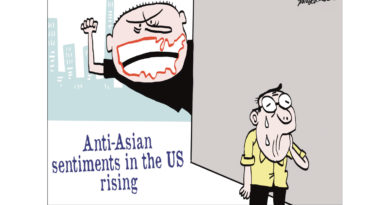EDITORIAL: The Straits Times says- Regions prepare to spread
The Straits Times says

Regions prepare to spread wings again
As cases of Covid-19 begin to taper, it is natural that business travellers in the Asia-Pacific will want to fly again. For a region where trade anchors prosperity, this is as essential as reopening schools, shops and offices. Singapore has started talks with China, Malaysia, New Zealand, Australia, Canada and South Korea with the aim of gradually reopening borders and establishing new rules to facilitate essential travel. Other nations are also experimenting. China and South Korea have implemented a “fast-track” entry agreement that exempts passengers from strict quarantine measures so that business activities do not have to be curtailed. Since it opened on May 1, some 1,000 travellers have availed themselves of this corridor linking Seoul with 10 regions in China. Similarly, Australia and New Zealand are preparing a trans-Tasman travel bubble with a view to reviving their tourism sectors. In Europe, Greece, Spain, Italy and Portugal are among nations looking to reopen airports over the next two months.


Memento MaximaDigital Mktg.
@ [email protected]
RESERVE ADVERTISEMENT
.
For the aviation industry, the steps come not a day too soon. The International Air Transport Association (Iata) projects that the world’s airlines will lose US$314 billion (S$444 billion) from passenger revenues this year, a 55 per cent drop from 2019. The Asia-Pacific carriers will suffer the most grievous cut, with revenue expected to fall by US$113 billion and passenger demand to halve. Changi Airport has seen passenger traffic plunge by 99.5 per cent as airlines cancelled flights with the onset of lockdowns. Singapore Airlines has had to slash 96 per cent of its network capacity and bear its first ever annual loss to the tune of $212 million, from a net profit of $683 million a year ago.


Memento MaximaDigital Mktg.
@ [email protected]
RESERVE ADVERTISEMENT
.
The gloomy projections, however, do not capture the will to travel again. An Iata-commissioned survey of travellers released in April showed that six in 10 anticipate a return to travel within one to two months of the pandemic being contained. However, Iata also estimates that it might take until 2023 before demand for international travel returns to pre-crisis levels. Given the unpredictability associated with the new virus, for which no cure or vaccine exists, the flight path to normalcy must be slow and steady, an ascendance guided by science and pragmatic policies.


Memento MaximaDigital Mktg.
@ [email protected]
RESERVE ADVERTISEMENT
.
A universal rule book will offer reassurance, just as a new set of measures, like full body scanners and advance passenger information sharing, helped the industry and travellers adapt to the threat of terrorism after the Sept 11, 2001 attacks. Testing, temperature screening, socially distanced boarding and deplaning, hygiene and air quality standards for the plane and altered in-flight services that minimise virus transmission will need to be standardised across airlines and nations. The additional layers of safety will add to delays and costs but may be the price to be paid for the wings of commerce to take flight again.


Memento MaximaDigital Mktg.
@ [email protected]
RESERVE ADVERTISEMENT
.


SIGN UP TO RECEIVE OUR EMAILThe most important news of the day about the ASEAN Countries and the world in one email: [email protected]
.









